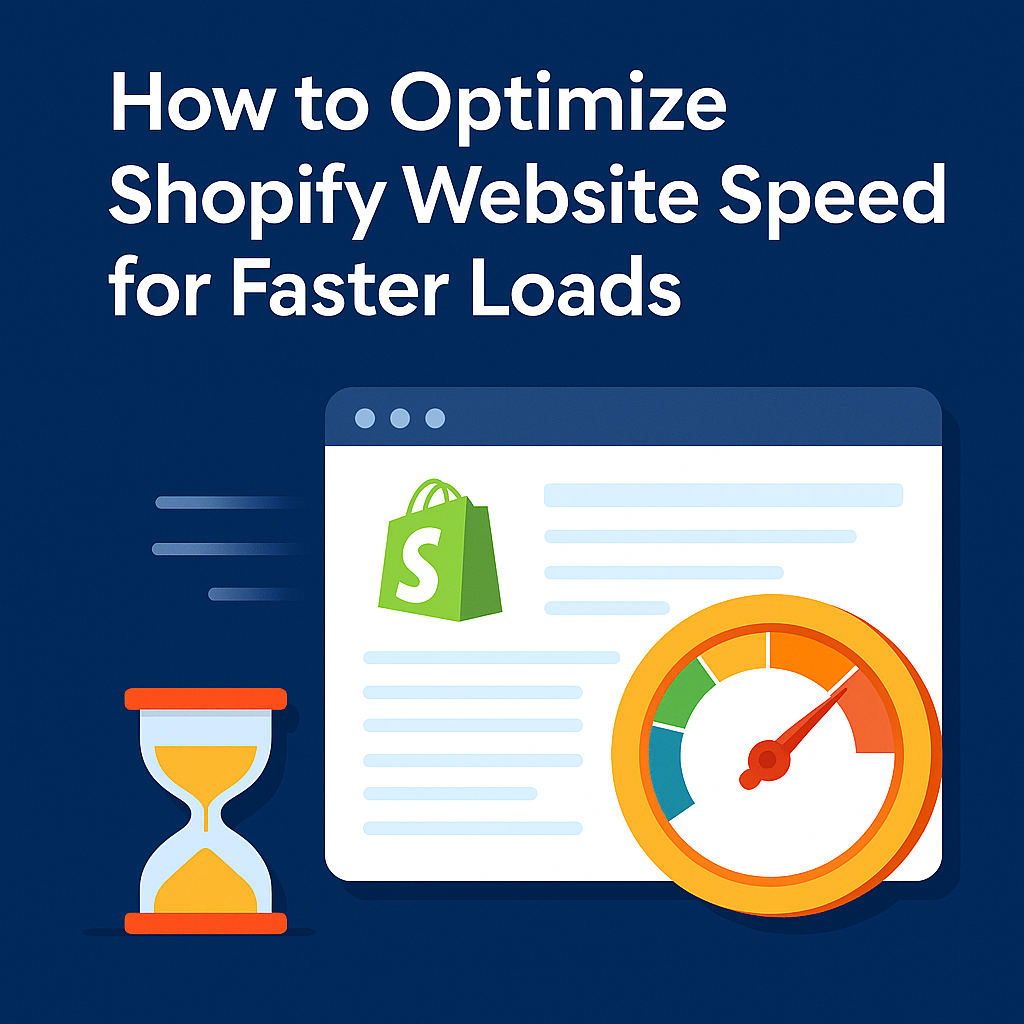How to Optimize Shopify Website Speed for Faster Loads
Having a slow website is dangerous. Why? It can make people leave your website in seconds, causing loss in sales, poor ranking, etc.
When someone clicks on your Shopify store, they expect it to load fast. If it doesn’t, they’ll leave before the page even opens. In fact, BBC once found they lost 10% of users for every extra second their site took to load. That’s not a small drop—it’s a serious hit.
In today’s online shopping space, speed is no longer optional. It’s a basic expectation. If your store lags, users won’t wait around. They’ll bounce—and probably won’t come back. This is especially true for mobile users, where attention spans are even shorter.
The good news? You can fix it. And no, you don’t need to be a developer to make it happen.
In this blog, we’ll break down exactly how to optimize your Shopify website speed for faster loads—so your visitors stay, explore, and convert.
1. Optimize Images Without Compromising Quality
High-resolution images enhance product appeal but can be a major culprit in slow load times. Compress images using tools like TinyPNG or ImageOptim before uploading. Additionally, consider implementing lazy loading, which defers the loading of images until they’re in the viewport, reducing initial load time.
2. Limit the Use of Third-Party Apps
While apps can add valuable functionality, each one introduces additional scripts that can hinder performance. Regularly audit your installed apps and remove those that are unnecessary or redundant. For essential apps, ensure they’re optimized and updated to the latest versions.
3. Minimize HTTP Requests
Every element on your page—images, stylesheets, scripts—requires an HTTP request. The more requests, the longer the load time. Combine CSS and JavaScript files where possible, and eliminate unnecessary plugins or widgets. Streamlining your site’s resources can lead to noticeable speed improvements.
4. Utilize Browser Caching
Browser caching stores parts of your website in visitors’ browsers, so returning users experience faster load times. Configure caching settings to specify how long browsers should store these resources. Shopify handles much of this automatically, but it’s beneficial to understand and optimize caching strategies where possible.
5. Reduce Redirects and Broken Links
Redirects can create additional HTTP requests, slowing down your site. Regularly audit your site for unnecessary redirects and fix broken links. Tools like Screaming Frog or Broken Link Checker can assist in identifying and resolving these issues.
6. Implement Accelerated Mobile Pages (AMP)
AMP is a framework that creates lightweight pages optimized for mobile users. By implementing AMP, you can significantly reduce load times for mobile visitors, enhancing their browsing experience. Several Shopify apps can help integrate AMP into your store seamlessly.
7. Monitor and Analyze Performance Regularly
Continuous monitoring ensures that your site maintains optimal performance. Use tools like Google Analytics and Shopify’s built-in analytics to track load times, bounce rates, and user behavior. Regular analysis allows you to identify and address performance bottlenecks promptly.
Final Thoughts
Optimizing your Shopify store’s speed is an ongoing process, but the benefits—improved user experience, higher search rankings, and increased conversions—are well worth the effort. By implementing the strategies outlined above, you can create a faster, more efficient online store that keeps customers engaged and encourages repeat business.
Need expert assistance in enhancing your Shopify store’s performance? Reach out to 3DM Lens, a leading digital marketing agency specializing in e-commerce optimization. Our team is ready to help you achieve faster load times and better user engagement.

